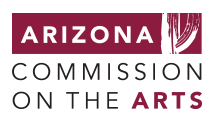New Data Sheds Light on Access to Arts Education in Arizona Schools
Access increases statewide, but lags in rural, tribal, and low-income communities
According to a new report on access to arts education in Arizona public and charter schools during the 2017-2018 school year, access increased by 4% to 88% since the 2014-2015 school year. Over 130,000 students are estimated to remain without access.


Prepared by Quadrant Research, the Arts Education Data Project Arizona Executive Summary Report features analysis of all available school enrollment data self-reported through the Arizona Department of Education’s AzEDS system by schools across the state, both traditional public schools and charter, grades pre-K through 12.
“This data helps highlight all of the incredible programs and classes that schools offer to students across our state,” said Superintendent of Public Instruction Kathy Hoffman. “I’m thrilled to see such an increase and to know that more and more of Arizona’s students have access to opportunities to engage in the arts. We must continue to expand access to arts education so all students are able to develop their creative muscles and reap the benefits that come from doing so.”
The Data
The data reflect both access (the presence of a course of instruction in at least one arts discipline) and participation (student enrollment).
Additionally, the analysis considers such variables as
- school configuration (Elementary, Middle, or High School),
- school type (traditional public or charter),
- locale (urban, suburban, rural, etc., based on classification codes devised by National Center for Education Statistics), and
- number of students who qualify for free and reduced-price lunch.
Key Findings: Access to Arts Instruction
Access is the lowest threshold measure for arts education. It is used to determine if a school offers at least one arts discipline with any student enrollment. This only indicates presence of program, not breadth, and is used primarily to determine where schools may be operating without arts instruction.
- While 88% of all students have access to some arts instruction, only 71% of students in grades K-8 had access to both Music and Art as requirement by state education code during the period covered by the report.
- The number of students without access to arts instruction decreased 4% between 2015 and 2018.
- The proportion of students without access to any arts courses was greatest in schools where more than 75% of students are eligible to receive Free/Reduced Price.
- Student access to the two required arts disciplines (Art and Music) for elementary and middle schools (K-8) is lowest in schools where more than 75% of students receive Free/Reduced Price Lunch (69%).
- While Public Schools represent 83% of the population they represent 60% of the “no arts” student population whereas Charter Schools represent 17% of the overall student population they hold 40% of the “no arts” students.
Key Findings: Participation in Arts Instruction
- 71% of all students participated in arts education courses.
- Music and Art are the most widely available of the arts disciplines and have the highest participation rates—45% and 52%, respectively—among the five artistic disciplines.
- Student participation varies only slightly between Traditional schools and Charter schools. In traditional schools, 73% of students are enrolled in the arts as compared to 60% for Charter schools.
The following chart highlights where participation in arts education is highest and lowest based on specific characteristics:
| Highest Arts Participation Rates | Lowest Arts Participation Rates |
|---|---|
| High Poverty (Free Lunch Students 76%+) | Mid-High Poverty (Free Lunch Students 51%-75%) |
| City (mid-size) | City (small) |
| Majority Race/Ethnicity is White | Majority Race/Ethnicity is American Indian |
| Traditional Public Schools | Charter Schools |
| Elementary Schools | High Schools |
The full Executive Summary Report can be found at https://azarts.gov/azartsed-explorer/.
The Data Explorer Dashboard
Beyond the Executive Summary Report, Arizonans can explore the data through an easy-to-use interactive online dashboard at https://azarts.gov/azartsed-explorer/. With intuitive controls and myriad visualization options, this powerful tool allows users to venture deep into the data, following whatever path they choose, including statewide geographic comparisons; county-, district-, and school-level reporting, and year-over changes in enrollment, to name just a few.
According to Elisa Radcliffe, the Arts Commission’s Arts Learning Manager, “This tool provides a picture of where Arizona’s schools currently stand, allowing school leaders, parents and advocates to ensure that every child in Arizona can participate in the arts.”
Arizonans Respond
Among those taking a close look at the picture presented by the report is Joseph Benesh, Executive Director of Arizona Citizens for the Arts, a statewide advocacy network that partnered with AZ DOE and the Arts Commission to sponsor the research with funding from Americans for the Arts.
“Every study ever done reports the same data: children do better when the arts are a robust part of their education: they develop more self-confidence; they graduate at higher rates; they perform better in school and in life,” said Benesh, referring to data such as that reported by Americans for the Arts (https://bit.ly/2sQ0YHM) showing that students who took four years of arts and music classes while in high school scored an average of 92 points higher on their SATs than students who took only one-half year or less.
“I worry about the +/- 30% of our children who are missing out on those benefits. All of our children deserve better than a C grade in access to a well-rounded education,” said Benesh.
According to a survey conducted by Ipsos Public Affairs (https://bit.ly/34uKu4m) on behalf of Americans for the Arts in 2018, Arizonans feel very strongly about the value of arts education. 92% of Arizonans agree that the arts are part of a well-rounded education while 80% say the arts help students perform better academically.




